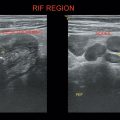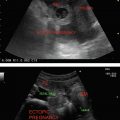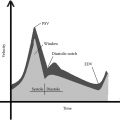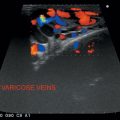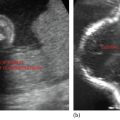Indications
1. H/o atherosclerosis, cardiovascular, cerebrovascular, or peripheral vascular diseases
2. Aortoarteritis
3. Transient ischemic attacks (TIAs)
4. Subclavian steal syndrome
5. Presence of neck bruit/pulsatile mass
Preparation
Patient in supine position with head extended and turned to the opposite side. No tight clothing.
Anatomy
Three branches of aortic arch:
1. Brachiocephalic trunk
—Right common carotid artery
—Right subclavian artery
—Right vertebral artery
2. Left common carotid artery
3. Left subclavian artery—Left vertebral artery
Common carotid artery bifurcates into internal and external carotid artery at carotid bulb, which is usually 5 centimeters below the angle of mandible.
Internal carotid artery (ICA) is larger than the external carotid artery (ECA). Superior thyroid artery arises from ECA; helps in differentiating ICA from ECA.
Variations in anatomy may occur.
Scanning plane—Longitudinal, transverse, and oblique.
Stay updated, free articles. Join our Telegram channel

Full access? Get Clinical Tree


